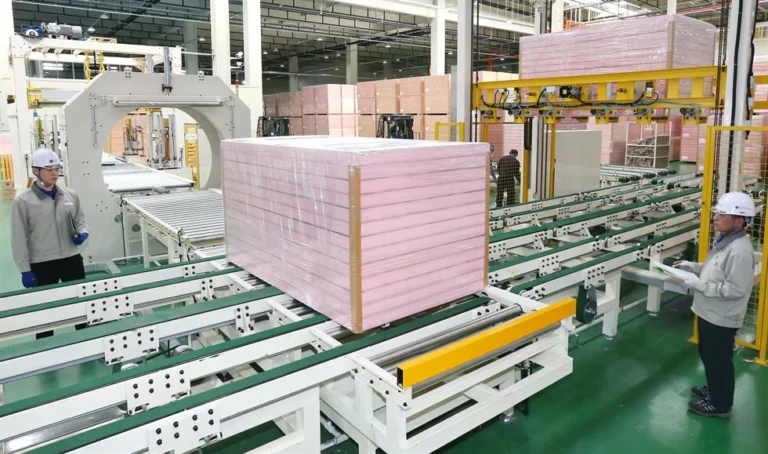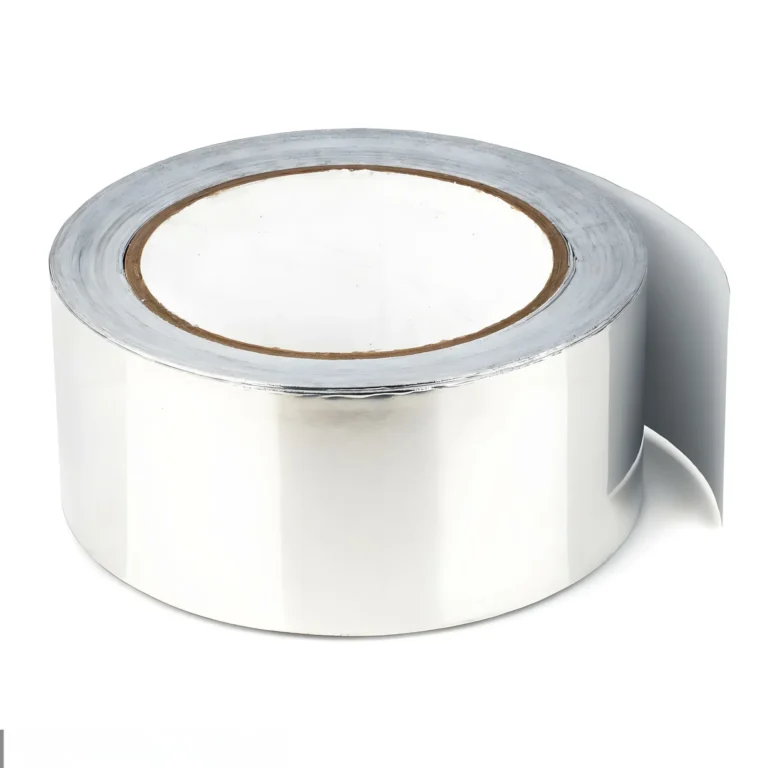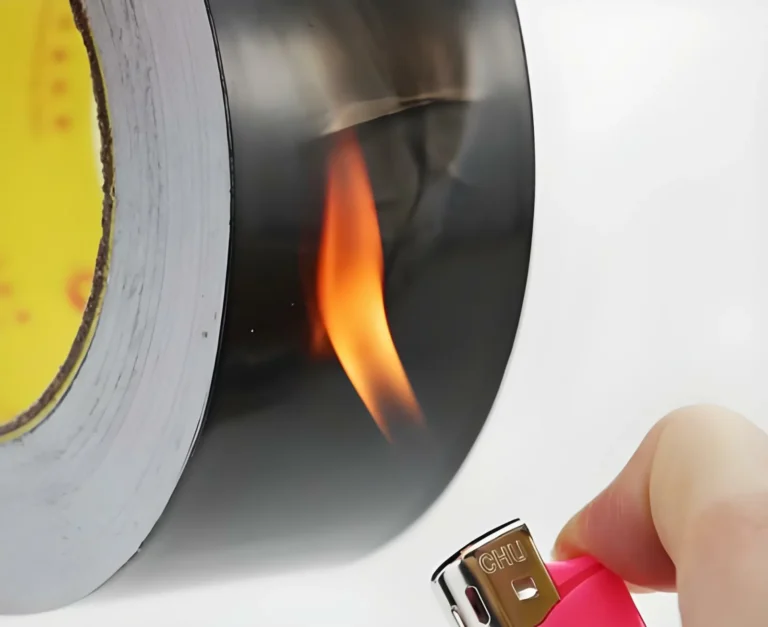Thermal conductivity is a key measure of how well insulation materials prevent heat transfer. Lower thermal conductivity indicates better insulation, which is essential for energy conservation in buildings. Effective insulation can reduce energy consumption by up to 20%, according to the U.S. Department of Energy.
Phenolic insulation is highly efficient, with a low thermal conductivity of around 0.020 W/m·K. It also offers excellent fire and moisture resistance, making it ideal for maintaining long-term insulation performance.
WT, a leading manufacturer of phenolic insulation, provides high-performance solutions that meet modern building codes and support energy-saving initiatives. Their products are designed for maximum efficiency, ensuring buildings are both energy-efficient and safe.
View our products: Phenolic Insulation
Understanding Thermal Conductivity
Thermal conductivity is the measure of a material’s ability to conduct heat. In the context of building insulation, it indicates how quickly heat can pass through an insulation material. The lower the thermal conductivity, the better the material is at insulating, which is essential for energy conservation.
Several factors influence thermal conductivity. The material’s composition, density, and moisture content all play significant roles. For example, denser materials typically have higher thermal conductivity, meaning they conduct heat more efficiently. However, materials with high moisture resistance, like phenolic insulation, maintain low thermal conductivity even in humid conditions.
Thermal conductivity is measured in watts per meter per Kelvin (W/m·K). This unit expresses the rate at which heat flows through a material per unit area, for a given temperature gradient. For instance, phenolic insulation has a thermal conductivity of around 0.020 W/m·K, which is significantly lower than other common building materials like concrete (1.7 W/m·K) or glass (0.8 W/m·K). This makes phenolic insulation a more effective choice for energy conservation in buildings.
Learn More About:What are sustainable building materials?
Common building materials vary widely in their thermal conductivity. For instance, wood has a thermal conductivity ranging from 0.12 to 0.04 W/m·K, depending on its type and moisture content. Meanwhile, fiberglass insulation typically has a thermal conductivity around 0.04 W/m·K, which is effective but still higher than that of phenolic insulation. Understanding these values helps in selecting the right insulation materials for energy-efficient building designs.
In summary, thermal conductivity is a critical factor in choosing building insulation materials. Lower thermal conductivity means better insulation and greater energy conservation. Phenolic insulation, with its low thermal conductivity, stands out as a top choice for maintaining energy efficiency in various building environments.
The Superiority of Phenolic Insulation
Phenolic insulation is a highly efficient material known for its low thermal conductivity and superior insulation performance. It is widely used in building insulation due to its ability to minimize heat transfer, which is critical for energy conservation.
Learn More About: What is Phenolic Insulation?
When compared to other insulation materials, phenolic insulation stands out due to its exceptionally low thermal conductivity, typically around 0.020 W/m·K. For context, common insulation materials like fiberglass have a thermal conductivity of approximately 0.040 W/m·K, while expanded polystyrene (EPS) is around 0.032 W/m·K. This makes phenolic insulation nearly twice as effective in preventing heat loss as some of its counterparts.
The low thermal conductivity of phenolic insulation directly translates into higher insulation performance. This means that less material is needed to achieve the same level of thermal resistance, making it a space-efficient choice for both new constructions and retrofitting projects. Additionally, phenolic insulation also offers excellent fire resistance and moisture resistance, ensuring that its insulating properties are maintained over time, even in challenging conditions.
What are the advantages of Phenolic Insulation?
- Energy Savings and Cost-Effectiveness:Phenolic insulation offers significant energy savings due to its low thermal conductivity, typically around 0.020 W/mK. This superior insulating ability reduces heat transfer, leading to lower heating and cooling costs. Over time, the energy savings translate into substantial cost-effectiveness, making phenolic insulation a wise investment for both residential and commercial buildings.
- Environmental Impact and Sustainability:Phenolic insulation contributes to sustainability by reducing energy consumption, which in turn lowers greenhouse gas emissions. Additionally, phenolic insulation has a longer lifespan compared to other materials, reducing the need for frequent replacement. This durability helps minimize waste, supporting long-term environmental goals.
- Fire Resistance and Safety:Phenolic insulation is renowned for its excellent fire resistance. It has a high ignition point and produces very little smoke when exposed to flames, making it a safer choice for building applications. This fire resistance is crucial for meeting stringent building codes and ensuring occupant safety.
- Moisture Resistance and Durability:Phenolic insulation has a closed-cell structure that provides exceptional moisture resistance. This characteristic prevents water absorption, maintaining the insulation’s effectiveness even in damp conditions. As a result, phenolic insulation remains durable over time, reducing the risk of mold growth and structural damage.
- Ease of Installation and Versatility:Phenolic insulation is easy to install, which reduces labor costs and installation time. It is available in various forms, such as boards and pipe sections, making it versatile for different applications. Whether used in walls, roofs, or floors, phenolic insulation adapts well to various building designs, ensuring broad applicability.
Applications of Phenolic Insulation
- Residential Buildings:Phenolic insulation is highly effective in residential buildings. Its low thermal conductivity (around 0.020 W/m·K) ensures excellent energy efficiency, which translates into lower heating and cooling costs for homeowners. It can be used in walls, roofs, and floors, providing a comprehensive insulation solution that also meets fire safety standards.
View More:Architecture and Construction
- Commercial Structures:In commercial buildings, phenolic insulation is valued for its ability to meet stringent building codes while offering long-term energy savings. It is commonly used in offices, retail spaces, and high-rise buildings, where its fire resistance and moisture resistance are particularly beneficial. The insulation’s durability ensures that commercial properties maintain energy efficiency over time, reducing operating costs.
Learn More About:Is Your Building Protected?
- Industrial Facilities:Industrial facilities often have specific insulation needs, including resistance to harsh environments and the ability to withstand high temperatures. Phenolic insulation meets these demands due to its low thermal conductivity and excellent fire resistance. It is often used in the insulation of pipes, tanks, and ductwork, ensuring safe and efficient operations in various industrial processes.
- Cold Storage and Refrigeration:Phenolic insulation is ideal for cold storage and refrigeration applications due to its low thermal conductivity and moisture resistance. These properties help maintain consistent temperatures, which is crucial for the preservation of perishable goods. The insulation minimizes heat gain, reducing the energy required to keep these environments cold, thus offering both operational efficiency and cost savings.
- Transportation and Automotive:In the transportation and automotive sectors, phenolic insulation is used to improve thermal management. It is often applied in vehicle cabins, refrigerated transport, and HVAC systems. The insulation’s light weight, combined with its high performance, helps improve fuel efficiency while maintaining temperature control within vehicles, which is especially important for refrigerated transport.
What are the success stories
Success Stories of Phenolic Insulation Implementation
Phenolic insulation has been successfully implemented in various projects, showcasing its effectiveness across different sectors. For example, in a large commercial office building in New York, phenolic insulation was used in the retrofit of the HVAC system. The project aimed to improve energy efficiency while meeting strict fire safety regulations. The use of phenolic insulation reduced heat loss by 40%, leading to significant energy savings and improved overall system performance.
Quantifiable Results in Terms of Energy Savings and Performance
The implementation of phenolic insulation in a residential complex in Chicago demonstrated measurable energy savings. By replacing the existing insulation with phenolic insulation in the walls and roof, the complex achieved a 30% reduction in energy consumption for heating and cooling. This resulted in annual savings of over $50,000 in energy costs for the property owners. Additionally, the insulation’s low thermal conductivity ensured that indoor temperatures remained stable, improving comfort for residents.
Testimonials from Satisfied Customers
Customers have consistently reported positive experiences with phenolic insulation. The facilities manager of an industrial plant in Texas noted, “After switching to phenolic insulation for our pipe systems, we saw a marked decrease in energy loss. The insulation has held up exceptionally well, even in our high-temperature environments. The energy savings and durability have exceeded our expectations.” Another satisfied customer, a homeowner in Florida, stated, “Installing phenolic insulation in our home made a noticeable difference in our energy bills. We also appreciate the peace of mind knowing our home is safer due to its fire-resistant properties.”
These case studies highlight the practical benefits of phenolic insulation, from significant energy savings to enhanced performance and customer satisfaction. The quantifiable results and positive feedback underscore its value as a reliable and efficient insulation solution across various applications.
Choosing the Right Phenolic Insulation Product
Factors to Consider When Selecting Insulation:When selecting phenolic insulation, several factors should be considered to ensure the best fit for your project. Key factors include the thermal conductivity of the product, which directly impacts energy efficiency, and the thickness required to meet specific thermal resistance (R-value) needs. Additionally, consider fire resistance ratings, especially for applications in residential or commercial buildings, and moisture resistance for environments prone to humidity. Cost-effectiveness, ease of installation, and long-term durability are also crucial elements in the decision-making process.
Product Range Offered by WT:WT offers a diverse range of phenolic insulation products tailored to various applications. Their product line includes standard insulation boards suitable for walls, roofs, and floors, as well as specialized pipe insulation for industrial and HVAC systems. Each product is designed with low thermal conductivity, typically around 0.020 W/m·K, ensuring high insulation performance. WT’s products also meet or exceed industry standards for fire and moisture resistance, making them a reliable choice for different environments.
Customization Options Available:WT understands that every project has unique requirements. To accommodate this, WT provides customization options for their phenolic insulation products. Customization can include specific dimensions, varying thickness levels to meet specific R-values, and tailored solutions for challenging installations. This flexibility ensures that clients receive an insulation product that perfectly aligns with their project needs, whether for residential, commercial, or industrial applications.
Technical Support and Guidance from WT:WT offers comprehensive technical support and guidance to help customers select the right phenolic insulation products. Their team of experts is available to assist with product selection, installation advice, and ensuring that the chosen insulation meets all relevant building codes and performance requirements. WT’s commitment to customer support ensures that clients receive not only a high-quality product but also the expertise needed to optimize its application.
View Our Product: Phenolic Insulation
What makes phenolic insulation different from other insulation materials?
- Thermal Performance: Phenolic insulation has a low thermal conductivity, which means it provides superior resistance to heat flow compared to many other insulation materials. This makes it highly effective at maintaining temperature differentials between the inside and outside of a building.
- Fire Resistance:Phenolic insulation is known for its excellent fire-retardant properties. It does not contribute to the spread of flame and can help to prevent the release of toxic gases when exposed to high temperatures, enhancing the safety of buildings.
- Moisture Resistance:Unlike some other insulation materials, phenolic insulation has a closed-cell structure that resists the absorption of moisture. This prevents the degradation of the insulation’s performance over time and helps to maintain the integrity of the building envelope.
- Environmental Benefits:Phenolic insulation is often made from materials that are recyclable and have a lower environmental impact. It can contribute to the achievement of green building standards and certifications.
- Durability: The closed-cell structure and resistance to moisture also contribute to the durability of phenolic insulation. It can maintain its performance characteristics over a long service life, reducing the need for replacement and minimizing waste.
- Energy Efficiency: Due to its high thermal resistance, phenolic insulation can lead to significant energy savings in heating and cooling. This not only reduces utility bills but also decreases the carbon footprint of buildings.
- Versatility: Phenolic insulation is available in various forms, such as boards, panels, and foams, making it suitable for a wide range of applications in both new construction and retrofit projects.
Learn More About: Unraveling Phenolic Insulation: The Chemical Core
How does phenolic insulation contribute to energy savings?
- High Thermal Resistance: Phenolic insulation has a low thermal conductivity, which means it provides a high level of thermal resistance. This helps to reduce heat transfer through the building envelope, keeping indoor spaces warmer in the winter and cooler in the summer with less energy required for heating and cooling.
- Efficient Temperature Control: By effectively maintaining temperature differentials, phenolic insulation reduces the load on HVAC systems. This means that heating and cooling equipment can be smaller, more efficient, and less energy-intensive, leading to reduced energy consumption.
- Reduced Heat Loss and Gain:In both residential and commercial buildings, a significant amount of energy is lost through walls, roofs, and floors. Phenolic insulation minimizes this heat loss in cold weather and heat gain in hot weather, resulting in a more stable indoor environment that requires less energy to maintain.
- Long-Term Performance: The durability of phenolic insulation ensures that it maintains its thermal properties over time. This means that the energy-saving benefits are consistent throughout the lifespan of the insulation, without the need for frequent replacement.
- Improved Occupant Comfort:By providing a more consistent indoor temperature, phenolic insulation can reduce the need for occupants to adjust thermostats based on comfort levels. This can lead to more consistent energy use and fewer spikes in energy consumption.
- Environmental Impact:The energy savings associated with phenolic insulation also contribute to a reduction in greenhouse gas emissions from energy production. This helps to mitigate the environmental impact of buildings, aligning with sustainability goals and potentially reducing energy costs associated with carbon taxes or incentives for green building practices.
Is phenolic insulation safe for residential use?
Yes, phenolic insulation is safe for residential use. It is widely recognized for its excellent fire resistance, low smoke production, and minimal toxic emissions when exposed to high temperatures. These properties make it a safe choice for residential buildings, where fire safety is a critical concern.Phenolic insulation also offers low thermal conductivity, which improves energy efficiency in homes. Additionally, it has good moisture resistance, reducing the risk of mold and mildew, which contributes to a healthier indoor environment.
Can phenolic insulation be used in both new construction and retrofits?
Yes, phenolic insulation can be used in both new construction and retrofit projects. Its versatility and the range of forms it comes in make it suitable for a variety of applications:
- New Construction:In new buildings, phenolic insulation can be integrated into the design and construction process from the outset. It can be used in walls, roofs, floors, and foundations to provide a continuous insulation layer that meets or exceeds building code requirements for thermal performance.
- Retrofits: For existing structures, phenolic insulation can be added to improve energy efficiency and thermal comfort. It can be installed in various ways, such as:
Adding insulation panels to the exterior or interior of walls.
Installing insulated roofing systems.
Upgrading floor insulation from above or below.
Incorporating insulation into window and door retrofits.
Phenolic insulation’s ease of installation and the fact that it can be cut and shaped to fit different spaces make it a practical choice for retrofit projects. Additionally, its high R-value (a measure of thermal resistance) per inch allows for the achievement of significant energy savings with a relatively thin layer of insulation, which is particularly beneficial in retrofits where space for insulation may be limited.
What is the lifespan of phenolic insulation?
The lifespan of phenolic insulation can vary depending on several factors, including the quality of the material, the conditions in which it is installed, and how well it is maintained over time. However, phenolic insulation is known for its durability and can typically last for several decades when properly installed and maintained.
Under normal conditions, phenolic insulation can have a lifespan of 25 to 30 years or more. This is due to its closed-cell structure, which makes it resistant to moisture and prevents the degradation that can occur with the absorption of water. Additionally, phenolic insulation is stable over a wide range of temperatures and does not break down easily when exposed to the elements.
It is important to note that the actual lifespan of phenolic insulation in a specific application can be influenced by factors such as:
- The thickness and density of the insulation material.
- The type of facings or coatings applied to the insulation.
- The exposure to mechanical damage or wear and tear.
- The presence of pests or other organisms that could potentially damage the insulation.
- The maintenance practices and any repairs that are carried out over time.
To ensure the longest possible lifespan for phenolic insulation, it is recommended to follow the manufacturer’s installation guidelines, use appropriate vapor barriers and protective layers, and conduct regular inspections and maintenance as needed.





